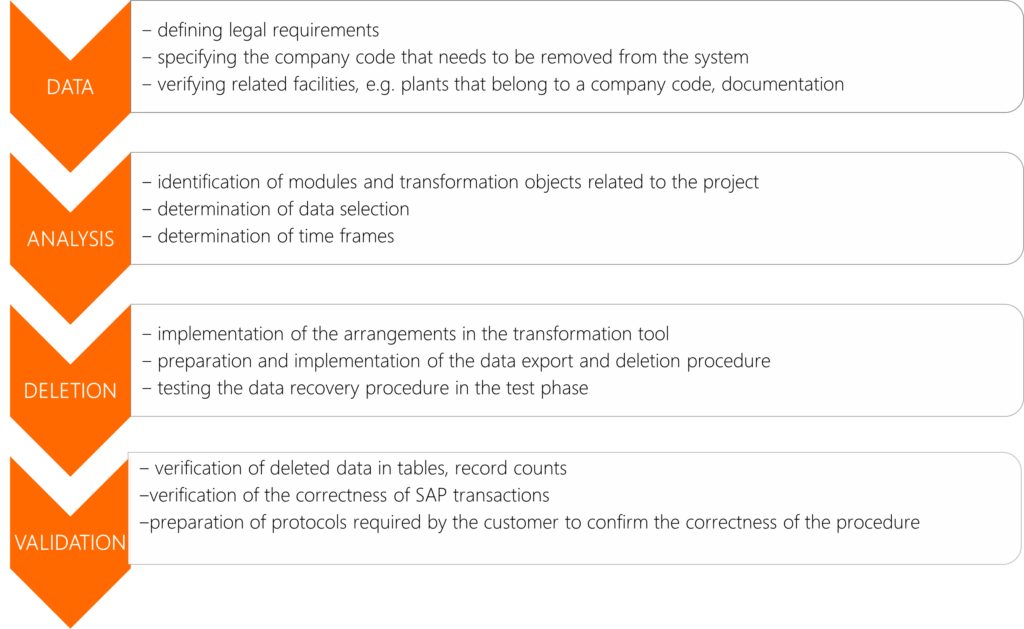All for One’s Digital Transformation Center projects are not always related to company growth or the intention to optimize system performance by implementing SAP S/4HANA. Sometimes a company closes parts of its plants. In some industries, it is necessary to adapt the system to legal requirements, for example by deleting data from SAP. In such cases, the first step is to clarify the legal situation and determine whether the closure of a plant means the company’s permanent liability for retail data associated with the company code. If so, the data must be deleted from the production system. The challenge is to clean only the required data, without affecting the rest, and to perform effective validation of the performed operation.
The problem can affect both small and large companies. In this case study, we present an example of a large-scale company that has in the SAP system more than 500 company codes from the energy industry. Data cleaning was related to a change in the business model and the closure of facilities due to a transition to renewable energy sources.
The Transformation Cockpit functionality from the CrystalBridge data transformation platform was used in the project. The configuration of the systems is non-typical here since due to the nature of the problem the source system is also the target one. The deletion is performed using a standard import block in the DELETE mode. By default, this mode is not processed on such a large scale, but is mainly used for data cleaning during migration projects in the testing phases of the project.

Key steps to be carried out during data cleaning
The stages of defining initial data and performing analysis are similar to standard merge or carve-out projects conducted in the case of mergers or carve-outs of parts of a company. The basic difference concerns satellite systems, where apart from the control system, there is also one system that simultaneously serves as the source and target system. That is why it is so important to design a data recovery procedure at the testing stage. When delivering a ready-made system to the customer, we must be sure that only the required entries in the tables have been removed, and the the operation of transactions has not been disturbed.
Despite the simple assumptions of the deletion project, data validation poses difficulties. The client must be able to prove to the auditor the correctness of the process carried out. The protocols generated in the Transformation Cockpit are helpful here. Data exported, deleted and, if necessary, restored can be tracked as lists of records for each table, as well as a complete register of entries with their contents.
The systematized approach allows for quick and effective cleaning of data assigned to the company code and enables the generation of full documentation confirming the operation. The number of test phases and system downtime can be reduced after successful implementation of the assumptions made during the analysis. Knowledge of the process and development of the methodology also help reduce resources, and thus project costs.


